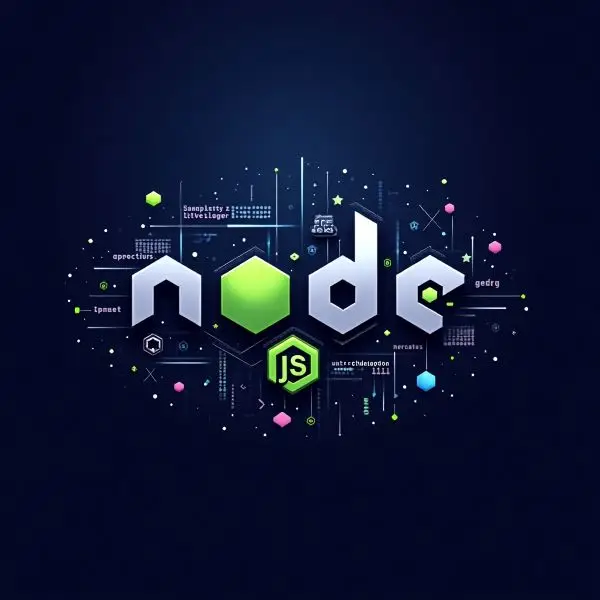
Real-Time Applications with WebSockets and Nest.js
Real-time applications have become an integral part of modern digital experiences, transforming the way users interact with web platforms. Whether it's a seamless chat application, an intense multiplayer gaming session, or instant notifications that alert you about important events, real-time interactions are now indispensable.
At the core of real-time applications is the ability to provide immediate feedback without users having to refresh or request new data explicitly. This is where WebSockets come into play, offering a robust way to achieve full-duplex communication channels over a single TCP connection. Unlike traditional HTTP requests, which are often cumbersome and resource-intensive for maintaining real-time data exchange, WebSockets enable efficient and persistent connections with very low latency.
Two popular technologies that facilitate the implementation of WebSockets for real-time functionality are Socket.IO and Nest.js. Socket.IO is a powerful JavaScript library that simplifies the complexity of real-time application development by providing a reliable engine with features like automatic reconnection, multiplexing support, and straightforward API for both server and client communication.
Nest.js, on the other hand, offers a modern framework for building scalable and efficient server-side applications using TypeScript. Its design is heavily influenced by Angular, which makes it a familiar choice for developers acquainted with modern front-end frameworks. Moreover, Nest.js provides native support for WebSockets, blending seamlessly with Socket.IO to provide out-of-the-box solutions for real-time application development. In this article, we will delve into the exciting world of real-time applications using WebSockets, specifically exploring how to leverage Socket.IO and Nest.js to build scalable and efficient applications. We'll walk you through setting up the development environment, constructing a simple yet robust real-time chat application, and covering essential advanced concepts to help you harness the full potential of these technologies in your projects. Whether you are a seasoned developer or just starting, you'll find valuable insights and practical steps to elevate your real-time development skills.
List of Contents
Understanding WebSockets
To fully appreciate the power and flexibility of real-time applications, it's essential to understand the underlying technology that makes them possible: WebSockets. This communication protocol is a game-changer when it comes to developing applications that require instantaneous and persistent communication between clients and servers.
Basic Concepts
WebSockets are a protocol designed to enable full-duplex communication channels over a single, long-lived TCP connection. Unlike the traditional request-response model of HTTP, where a client must repeatedly ask the server for updates, WebSockets establish a continuous connection. This allows data to flow freely in both directions without the need for repeated requests.
The full-duplex nature of WebSockets means that the server can push updates to the client immediately when new data becomes available, eliminating the latency associated with request-based polling methods. This is particularly advantageous in scenarios where quick updates are crucial, such as in live chat systems or online gaming environments.
Advantages Over HTTP Polling
Traditional HTTP polling involves a client periodically sending requests to the server to check for new data. While this method is often used to mimic real-time interactions, it is not efficient. Polling can lead to increased latency, higher bandwidth usage, and potentially overwhelming server load due to the constant barrage of requests.
WebSockets address these inefficiencies by maintaining an open connection between the client and the server, allowing instantaneous two-way communication. This reduces the need for constant HTTP handshakes, lowers bandwidth consumption, and reduces server workloads significantly. As a result, WebSockets provide a smoother and more responsive user experience, especially in applications demanding rapid communication exchanges.
Establishing a WebSocket Connection
Establishing a WebSocket connection involves a simple handshake process that starts as an HTTP request. This request asks the server to upgrade the connection from HTTP to WebSocket. If the server agrees, the connection is established, and data exchange can commence via the open WebSocket channel.
This handshake facilitates easy initiation of WebSocket connections, even over existing infrastructure designed primarily for HTTP traffic, simplifying integration into web applications.
Use Cases for WebSockets
The application of WebSockets is vast and varied:
- Real-time Applications
Perfect for chat applications where users need instant feedback without waiting for message polling. - Collaborative Tools
Applications like online collaborative document editors leverage WebSockets to enable multiple users to work together in real-time. - Live Data Feeds
Ideal for financial services and social media platforms streaming live data updates directly to users. - Interactive Gaming
Critical in online gaming for transmitting real-time data between players and game servers.
By providing instantaneous two-way communication, WebSockets revolutionize how developers build dynamic, interactive, and timely web applications. As we proceed, we'll explore how Socket.IO and Nest.js utilize this powerful technology to enable robust real-time functionalities in your applications.
Introduction to Socket.IO
When building real-time web applications that require persistent, bi-directional communication between the server and the client, Socket.IO emerges as a premier solution. It's a versatile JavaScript library that abstracts the complexities of WebSockets while introducing additional functionalities to enhance real-time interactions.
What is Socket.IO?
Socket.IO is a robust and feature-rich library that builds on top of WebSockets, providing an even more developer-friendly approach to handling real-time communication. While it leverages WebSockets for real-time communication under optimal conditions, it also offers fallback mechanisms (such as long polling) to ensure connectivity across various network and browser environments. This makes it a reliable choice for developing applications that prioritize consistent user experience regardless of the underlying network conditions.
Key Features of Socket.IO
- Automatic Reconnection
One of the most user-friendly aspects of Socket.IO is its ability to automatically reconnect whenever a client-server connection is lost. This ensures that users remain connected with minimal manual intervention, contributing to a seamless interaction. - Event-Driven Communication
Socket.IO utilizes an event-based architecture, allowing developers to easily define custom events for specific interactions. This paradigm closely aligns with the needs of real-time applications, making event handling intuitive and clear. - Rooms and Namespaces
Socket.IO introduces the concepts of rooms and namespaces, which help in organizing client-server communication. Rooms allow grouping of clients that can receive messages from the server or from each other, whereas namespaces separate logic and events into isolated channels within a single connection. This aids in the architectural organization of complex applications. - Binary Streaming
Supporting binary data transmission, Socket.IO can handle rich data exchanges involving files, media, or complex data structures, broadening the scope of what you can achieve with real-time applications. - Cross-Browser Compatibility
One of Socket.IO greatest strengths is its broad support across various browsers, handling differences in WebSockets implementation through intelligent fallbacks. This ensures that your application maintains a consistent experience for all users, regardless of their choice of browser.
Compatibility and Support
Socket.IO excels in environments where varied network conditions and browser support present challenges. Its compatibility with both modern and legacy browsers enables developers to confidently deploy WebSocket capabilities without the risk of alienating parts of their user base. Furthermore, Socket.IO seamlessly integrates with Node.js, but it can also be used with other back-end technologies, thanks to its RESTful API compatibility and client libraries in multiple programming languages.
By providing a reliable real-time communication layer with enhanced features and intelligent fallbacks, Socket.IO empowers developers to craft engaging and interactive applications. As we proceed to develop a chat application using Socket.IO and Nest.js, you'll see how these features simplify and magnify the capabilities of real-time functionality in web apps.
Building a Real-Time Chat Application
Creating a real-time chat application is an excellent way to grasp the fundamentals of WebSockets and observe the practical benefits of using Socket.IO and Nest.js. In this section, we'll guide you through constructing a simple yet effective chat application, highlighting the key components and processes involved.
Structure and Design
Before diving into code, it's essential to conceptualize the structure of our chat application. At its core, the application will consist of a server powered by Nest.js, equipped with Socket.IO to handle real-time messages efficiently. The client side can be built with any framework or plain HTML/JavaScript to connect to the server and facilitate user interaction.
Server Components- WebSocket Gateway
A crucial component that listens for WebSocket connections, manages incoming and outgoing messages, and ensures the smooth flow of real-time data. - Event Handlers
Functions within the gateway to process events such as connecting, messaging, and disconnecting.
- Connection Management
Establishes and maintains a WebSocket connection to the server using Socket.IO client library. - UI Elements
Provides input fields for sending messages and a display area for chat messages.
Setting Up a Nest.js Project
To get started with setting up our server:
- Initialize a Nest Project
Use the Nest CLI to create a new project. Make sure you have Node.js and npm installed.npm i -g @nestjs/cli nest new real-time-chat - Install Socket.IO
Add Socket.IO to your Nest.js project:npm install --save socket.io socket.io-client @nestjs/websockets @nestjs/platform-socket.io - Create a WebSocket Gateway
In your Nest.js application, define a gateway that will handle client connections and events.import { SubscribeMessage, WebSocketGateway, WebSocketServer, OnGatewayConnection, OnGatewayDisconnect } from '@nestjs/websockets'; import { Server, Socket } from 'socket.io'; @WebSocketGateway() export class ChatGateway implements OnGatewayConnection, OnGatewayDisconnect { @WebSocketServer() server: Server; handleConnection(client: Socket) { console.log(`Client connected: ${client.id}`); } handleDisconnect(client: Socket) { console.log(`Client disconnected: ${client.id}`); } @SubscribeMessage('message') handleMessage(client: Socket, payload: any): void { this.server.emit('message', payload); // Emits the message to all connected clients } } - Register the Gateway
Ensure your gateway is included in the module's providers withinapp.module.ts:import { Module } from '@nestjs/common'; import { ChatGateway } from './chat.gateway'; @Module({ providers: [ChatGateway], }) export class AppModule {}
Handling Events
With the server capable of managing WebSocket connections, you now need to set up event handlers for receiving and sending messages:
- Connect Event
Initiate actions whenever a new client connects. This might be logging the connection or sending a welcome message. - Message Event
Process incoming messages when clients send data and broadcast messages out to all connected clients. - Disconnect Event
Handle scenarios when clients disconnect, such as cleaning up resources or notifying other users.
Client-side Implementation
A simple client can be created using HTML and JavaScript. You need the Socket.IO client library to connect and interact with your Nest.js server.
<!DOCTYPE html>
<html lang="en">
<head>
<meta charset="UTF-8">
<title>Real-Time Chat</title>
<script src="/socket.io/socket.io.js"></script>
<script>
const socket = io('http://localhost:3000'); // Connect to the Socket.IO server
socket.on('connect', () => {
console.log('Connected to server');
});
socket.on('message', (message) => {
const chatBox = document.getElementById('chat');
chatBox.innerHTML += `<p>${message}</p>`;
});
function sendMessage() {
const input = document.getElementById('messageInput');
socket.emit('message', input.value); // Send message to the server
input.value = '';
}
</script>
</head>
<body>
<div id="chat"></div>
<input id="messageInput" type="text" placeholder="Type a message">
<button onclick="sendMessage()">Send</button>
</body>
</html>By following these steps, you've created a basic real-time chat application using Socket.IO and Nest.js. This foundational setup can be expanded with additional features like user authentication, chat rooms, or message persistence. As you continue to explore and refine the application, you'll discover the full potential of building scalable, interactive, real-time applications using these powerful tools.
Advanced Features and Concepts
Building a basic real-time chat application is a great start, but to leverage the full potential of real-time technologies, you must delve into more advanced features and concepts. These enhancements can significantly improve the functionality, scalability, and user experience of your application.
Rooms and Namespaces
RoomsRooms are subsets of connections that can be used to target specific groups of clients. In a chat application, for instance, each chat room can correspond to a specific topic or group of users. This allows you to send messages only to clients subscribed to a particular room.
@SubscribeMessage('joinRoom')
handleJoinRoom(client: Socket, room: string): void {
client.join(room);
}
@SubscribeMessage('message')
handleRoomMessage(client: Socket, payload: { room: string, message: string }): void {
const { room, message } = payload;
this.server.to(room).emit('message', message); // Sends message to everyone in the room
}If you need completely separate areas for different types of communications (like separating public chat and private messages), namespaces come into play. They allow you to partition the logic within your applications into different communication channels within a single connection.
@WebSocketGateway({ namespace: '/private' })
export class PrivateChatGateway {
@WebSocketServer() server: Server;
// Similar connection and message handling as the main chat, but in a different namespace
}Handling Message Persistence
As more users join your application, you must ensure that the system remains responsive and performant.
Horizontal ScalingWith Socket.IO, scaling can be achieved using a message broker like Redis as an adapter. The Redis adapter allows Socket.IO servers to communicate in a multi-server setup, facilitating horizontal scaling.
npm install socket.io-redisimport * as redisAdapter from 'socket.io-redis';
@Injectable()
export class ChatGateway {
afterInit(server: Server) {
server.adapter(redisAdapter({ host: 'localhost', port: 6379 }));
}
}Utilize load balancing techniques to distribute incoming requests across multiple servers, helping manage the load effectively.
Optimizing Data TrafficReduce bandwidth consumption by sending only necessary data, compressing payloads, and using efficient data structures.
Security Considerations
Ensure secure communication between the client and server is paramount. Implement measures such as:
- Authentication and Authorization
Secure rooms and namespaces by validating user sessions when establishing WebSocket connections. - Data Encryption
Utilize SSL/TLS to encrypt data in transit, protecting messages from being intercepted.
By incorporating these advanced features and concepts into your application, you lay the groundwork for a powerful, scalable, and secure real-time communication platform. This not only enhances user engagement but also prepares your application to handle a wide variety of real-world scenarios and use cases.
Testing and Debugging
Once you've built your real-time application, ensuring its robustness and smooth operation is crucial. Testing and debugging are essential steps in the development process, helping you maintain the functionality and reliability of your application. For real-time applications utilizing WebSockets, particularly with Socket.IO, this involves specific strategies and tools.
Testing Real-Time Features
Testing real-time applications can be more complex than traditional web apps, primarily due to the asynchronous nature of WebSocket communications. Here are some effective strategies:
- Unit Testing
- Use testing frameworks like Jest or Mocha to test individual components and functions within your Nest.js application.
- Mock WebSocket connections using libraries such as
socket.io-mockor similar tools, allowing you to simulate client-server interactions without a live server connection.
const socketIOClient = require('socket.io-client'); const server = require('socket.io')(); describe('Chat Gateway', () => { let socket; beforeAll((done) => { server.listen(5000); socket = socketIOClient.connect('http://localhost:5000'); done(); }); it('should receive a message', (done) => { server.on('connection', (client) => { client.on('message', (msg) => { expect(msg).toBe('Hello'); done(); }); }); socket.emit('message', 'Hello'); }); afterAll((done) => { server.close(); socket.close(); done(); }); }); - Integration Testing
- Test the complete flow from the client to the server and back, verifying interactions across multiple modules.
- Use tools like Cypress to simulate user interactions and test WebSocket behavior in a browser environment, ensuring that front-end components correctly handle real-time data.
- Stress Testing
- Simulate a high number of simultaneous connections and interactions to see how your application handles load.
- Tools like Artillery can help automate load testing for WebSocket-based applications, measuring performance under various conditions.
Debugging Common Issues
Real-time applications can encounter specific issues related to asynchronous data flow, network instability, and state management. Effective debugging is vital:
Logging:- Implement comprehensive logging on both the client and server sides to track connections, disconnections, emitted events, and received messages.
- Use built-in tools in Nest.js and Socket.IO for logging. Enhance these with libraries like Winston for more advanced logging capabilities.
- Keep an eye on active WebSocket connections, especially when scaling horizontally. Tools like Socket.IO
socket.io-admin-uioffer a graphical interface for monitoring and managing connections.
- Use network debugging tools, such as Chrome DevTools, to inspect WebSocket frames and payloads. This visibility can help identify discrepancies in expected versus actual data exchanges.
- Listen for and handle WebSocket lifecycle events like
connect_erroranddisconnect, incorporating strategies to recover from transient errors or network issues.
- Ensure that your application handles asynchronous flows correctly, avoiding race conditions that can arise from out-of-order message delivery.
Automated Testing Tools
Leveraging automated tools can significantly improve the testing and debugging process:
- Socket.IO Testing Library
Provides utilities for creating and manipulating Socket.IO connections within your test suite. - Selenium or Puppeteer
Useful for end-to-end testing involving user interactions within browsers. - WebSocket Debugging Proxies
Tools like Wireshark can monitor and log network traffic, offering detailed insights into connection stability and data integrity.
By implementing these testing and debugging strategies, you can ensure that your real-time application is both robust and reliable, capable of delivering a seamless user experience while maintaining performance and resilience under varying conditions.
Summary
Building real-time applications has become an essential skill in modern web development, offering users dynamic and interactive experiences that are critical in today's fast-paced digital world. By harnessing the power of WebSockets through tools like Socket.IO and frameworks such as Nest.js, developers can create scalable, efficient, and robust real-time applications that meet the demands of contemporary users.
Throughout this article, we've navigated the essentials and complexities of creating a real-time chat application. We've explored the core principles of WebSockets and how Socket.IO enhances those capabilities with features like rooms, namespaces, and automatic reconnection. We've also delved into Nest.js's integration capabilities, showcasing how it serves as a strong foundation for server-side development in real-time applications.
You now have the knowledge to create engaging, efficient, and resilient real-time applications.
Happy coding!



